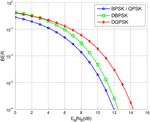ldynasa
Junior Member level 3

- Joined
- Jun 14, 2011
- Messages
- 25
- Helped
- 2
- Reputation
- 4
- Reaction score
- 2
- Trophy points
- 1,283
- Activity points
- 1,470
Hi, everyone.
Recently I've been reading this paper where the receiver has two differential output for I and Q channel respectively. The analysis simply assumes an output of I+jQ, but this is a complex signal. How do you measure the noise figure? Is there any instrument for analyzing complex signals?
Thanks
Recently I've been reading this paper where the receiver has two differential output for I and Q channel respectively. The analysis simply assumes an output of I+jQ, but this is a complex signal. How do you measure the noise figure? Is there any instrument for analyzing complex signals?
Thanks






